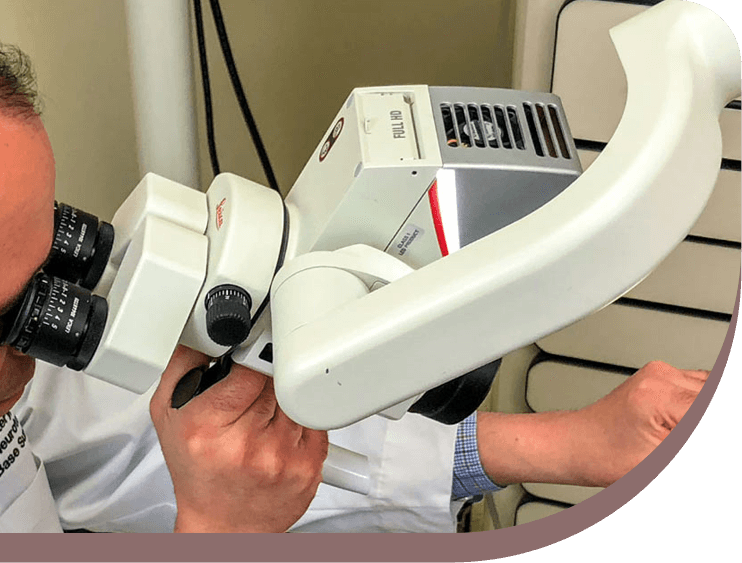
Acoustic Neuroma (Vestibular Schwannoma)
Acoustic Neuroma (Vestibular Schwannoma) – About
Acoustic neuromas (vestibular schwannomas or acoustic tumors) are benign tumors that arise from either the balance or auditory nerves. They are slow growing with an incidence of approximately 1:100,000. Acoustic neuromas are the most common tumors of the internal auditory canal and cerebellopontine angle. These spaces contain nerves that provide hearing, balance, and facial motion. It is also adjacent to parts of the brain known as the cerebellum and brainstem. The most common symptoms of these tumors are hearing loss and ringing of the ear (tinnitus). Other symptoms include imbalance, vertigo (sensation of environment or self moving), and facial numbness. Large tumors can cause compression of the brain, headache, increased brain pressure and visual symptoms. Rarely these tumors can be life-threatening due to compression of the brain.
Acoustic Neuroma (Vestibular Schwannoma) – Diagnosis
Most cases are diagnosed when a patient experiences hearing loss that is worse on one side. Often this is accompanied by tinnitus on the same side. Usually an audiogram (hearing test) is obtained that verifies this hearing loss. An MRI then is performed in the majority of cases that demonstrates the tumors. Sometimes another specialized hearing test known as an ABR can be done that can help screen for abnormalities. Rarely in cases with patients who cannot have an MRI, a CT may make the diagnosis, however CT is less accurate than MRI to make the diagnosis and can miss small- and medium-sized tumors.
After the diagnosis is made often balance testing with videonystagmography (VNG) and vestibular-evoked myogenic potentials (VEMP) are used to obtain information on one’s balance function. Additionally if there is concern of a patient’s facial nerve function then electroneurography (ENoG) may be performed to look at facial nerve function.
Acoustic Neuroma (Vestibular Schwannoma) – Treatment
In general there are three treatment options for acoustic neuromas: 1) Surgery, 2) Stereotactic Radiation and 3) Observation. The preferred treatment usually depends on a combination of factors that include age of patient, size of tumor, hearing status, location of tumor and patient preference. Dr. Slattery is skilled in providing all treatment options.
- Surgery – There are three surgical approaches for treating acoustic neuromas.
- Translabyrinthine approach – this approach is best for larger tumors and tumors in which patients have poor hearing as residual hearing is lost during the surgery. There is less retraction of the brain with this approach compared to other techniques and any size tumor in any location can be removed with the translabyrinthine approach.
- Middle fossa approach – the middle fossa approach is used in certain smaller tumors in patients with good hearing. A window of bone above the ear is temporarily removed and the tumor is removed from above. In some patients hearing remains after surgery.
- Retrosigmoid approach – another approach is the retrosigmoid approach. This allows for potential hearing after surgery for tumors that are small- or medium-sized. A craniotomy (bone window) in made behind the ear and part of the brain known as the cerebellum is retracted to expose the tumor.
- Stereotactic radiation – Another type of treatment for acoustic neuromas is stereotactic radiation. This involves delivery of radiation as a one-time treatment to the tumor. It is best for tumors under 2 cm in size. The goal of radiation is to halt the tumor’s growth.
- Observation – In some cases, especially small tumors with good hearing in which surgery or radiation is not selected or in elderly patients, observation may be suggested. In such cases periodic repeat imaging is often used to monitor the tumor.

Conditions Treated
Follow us


Your Health Starts Here
"*" indicates required fields
